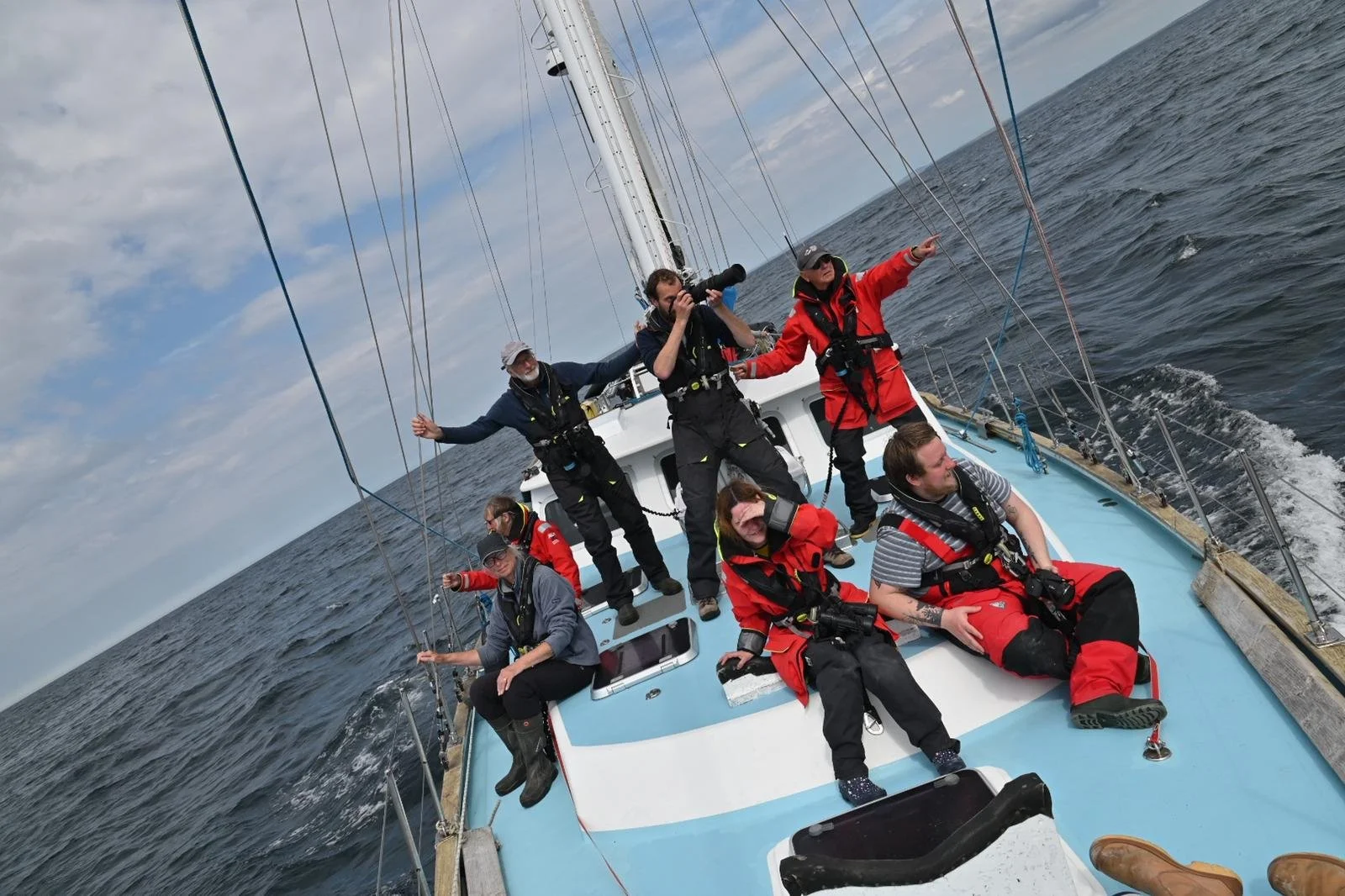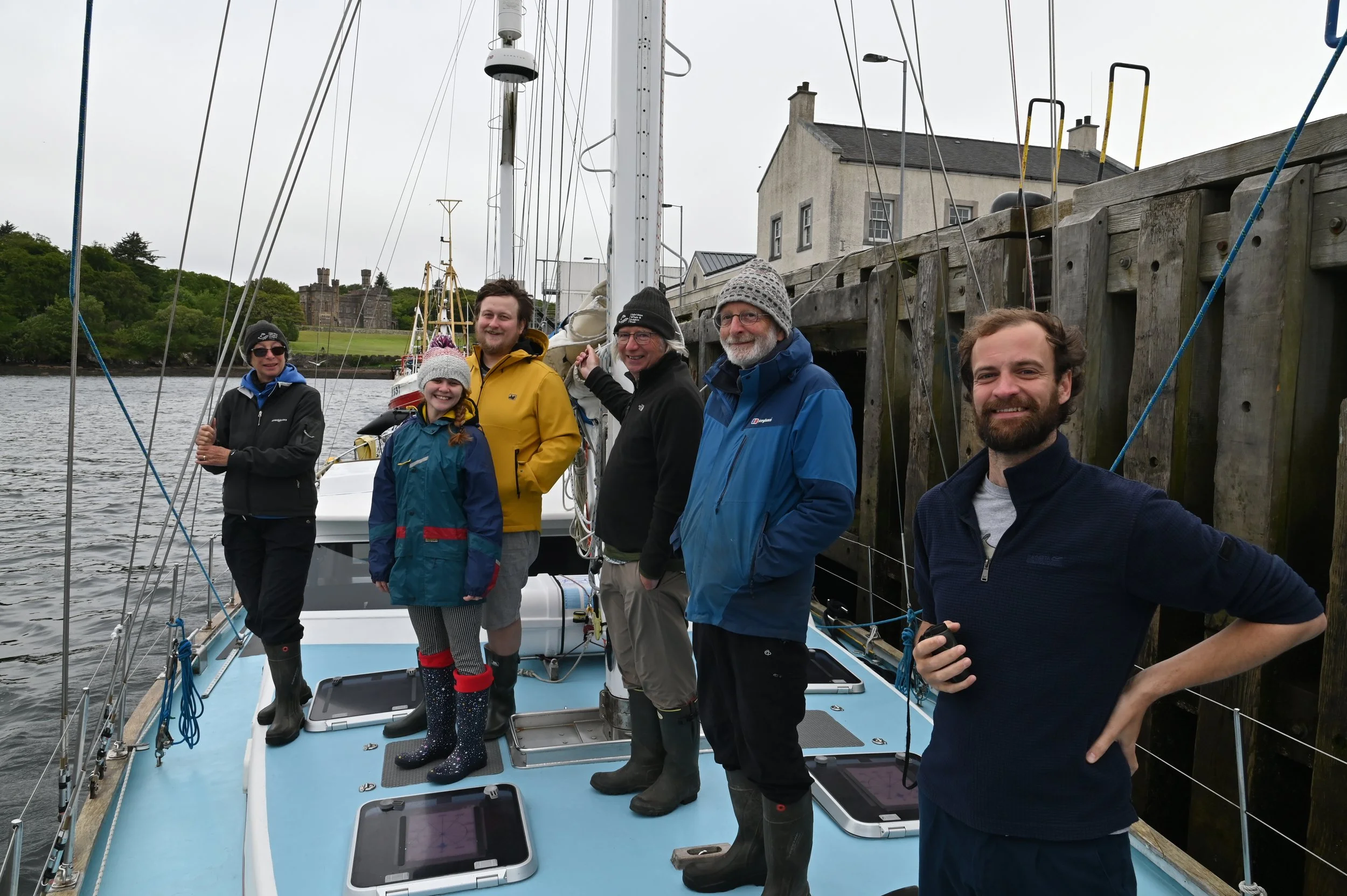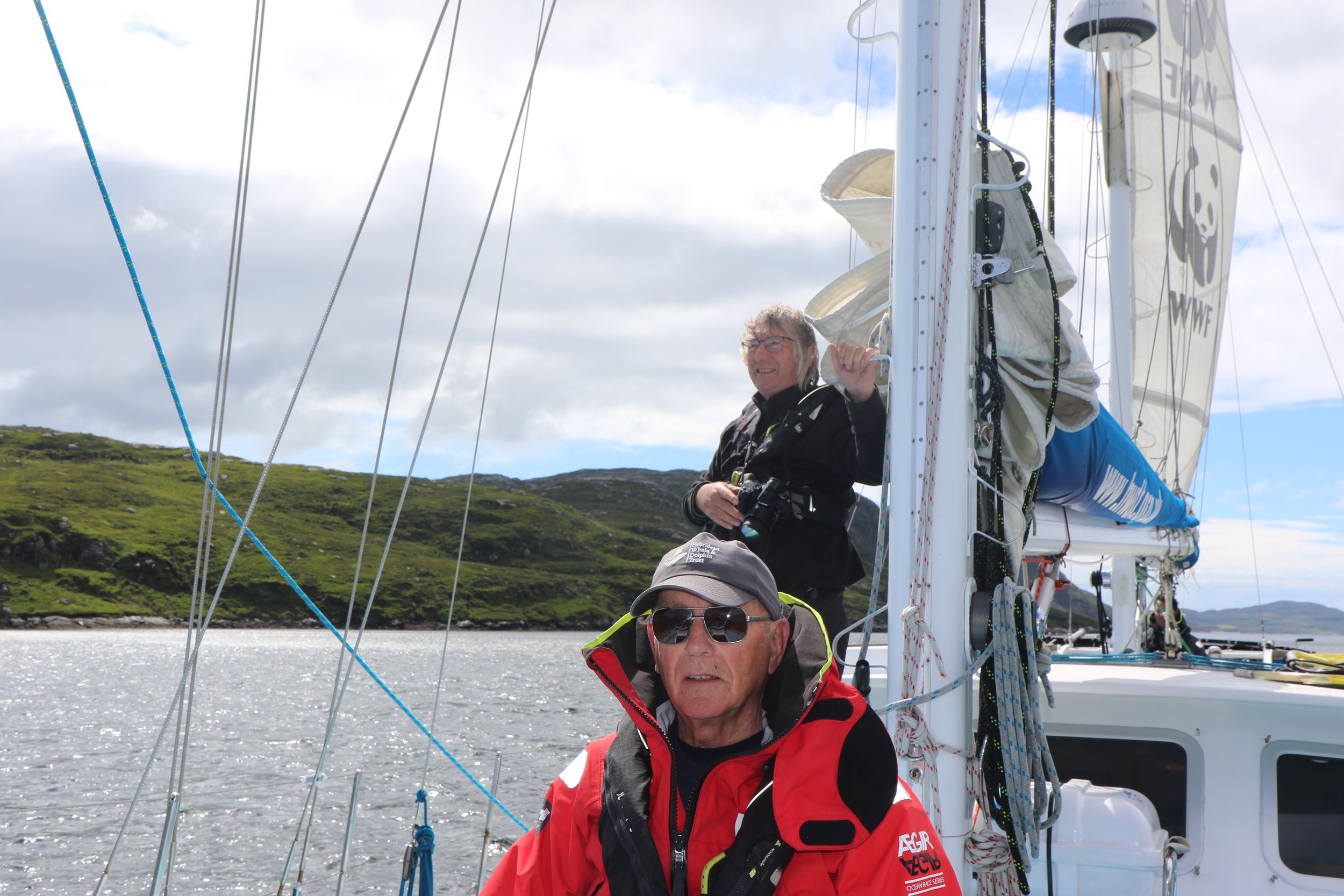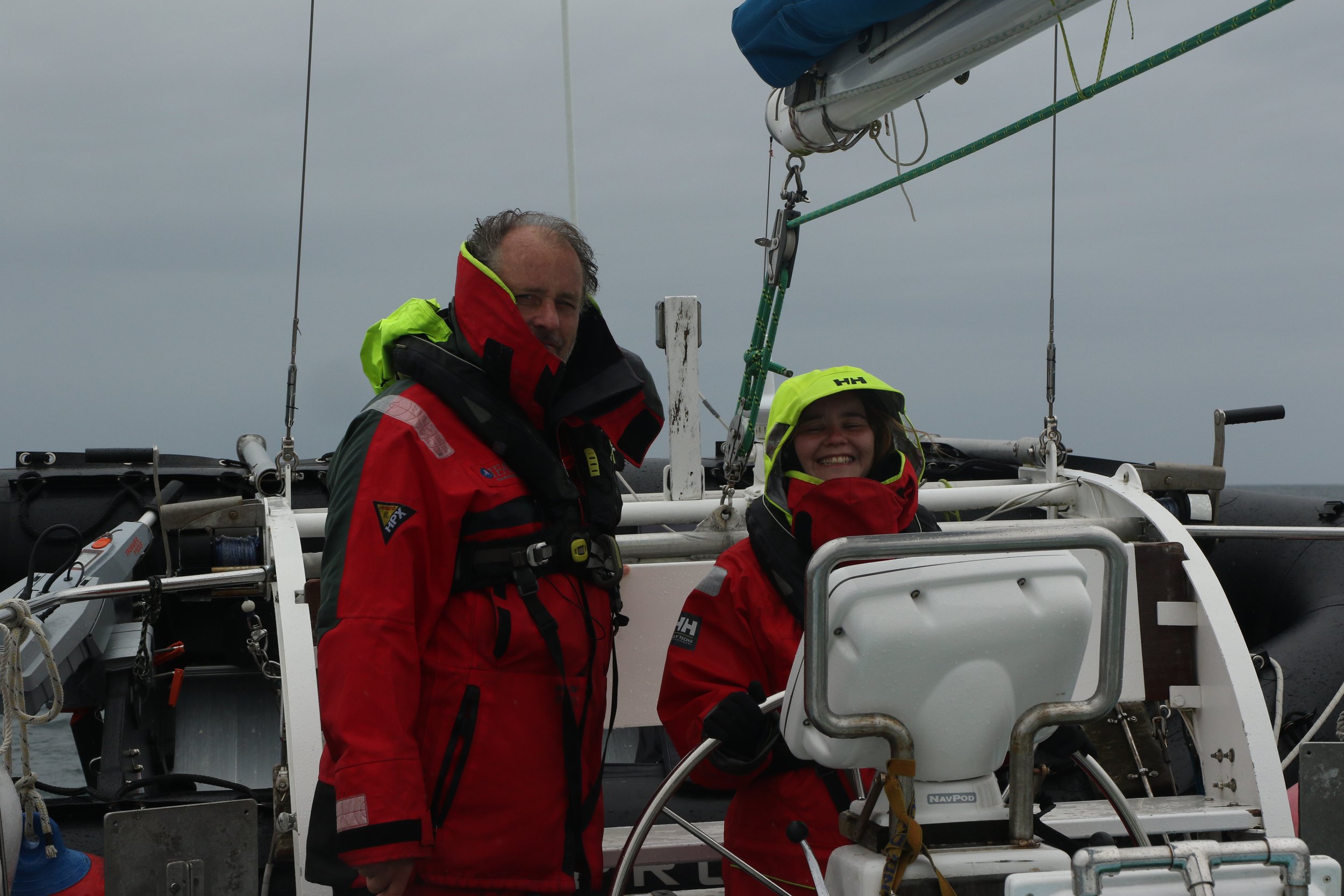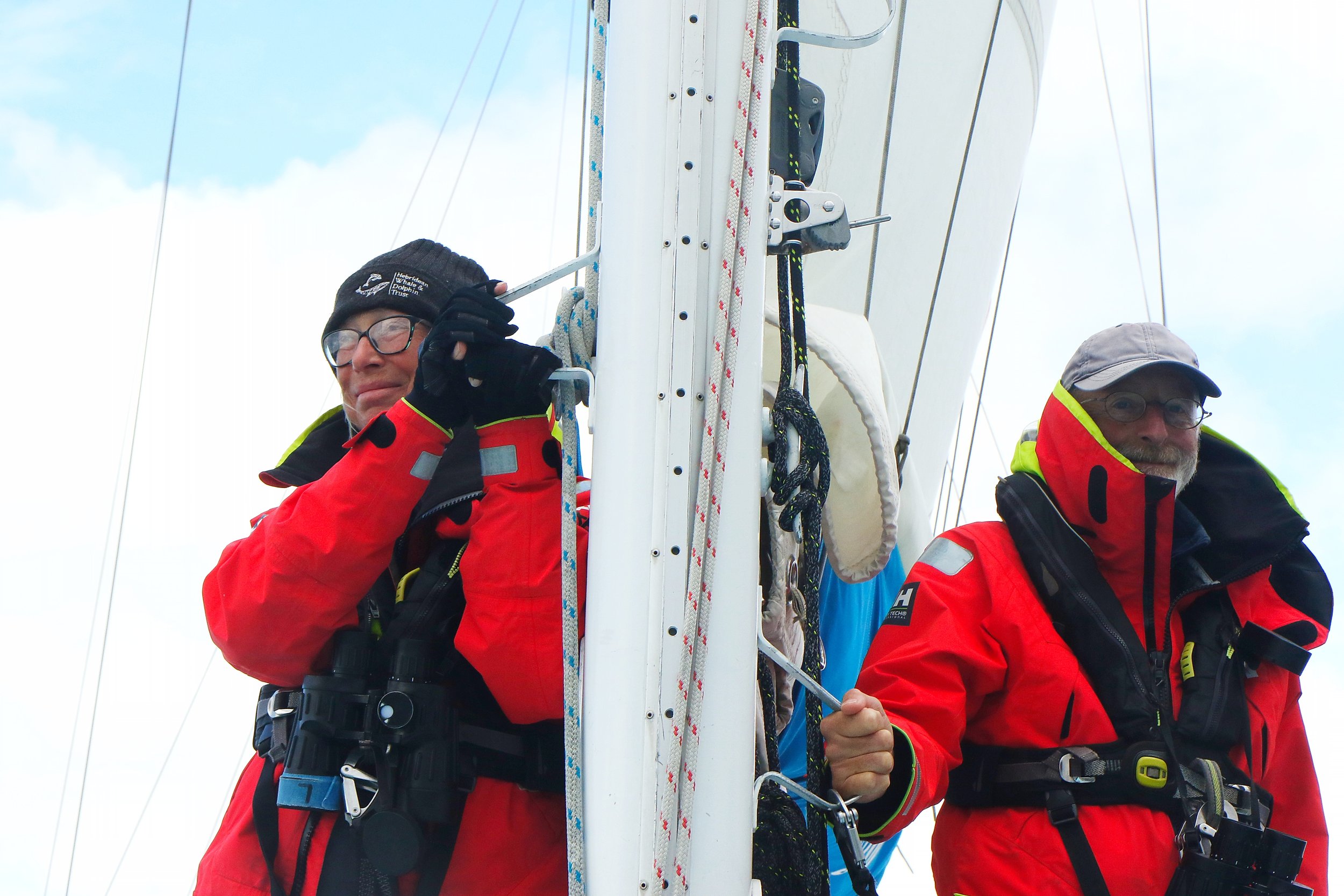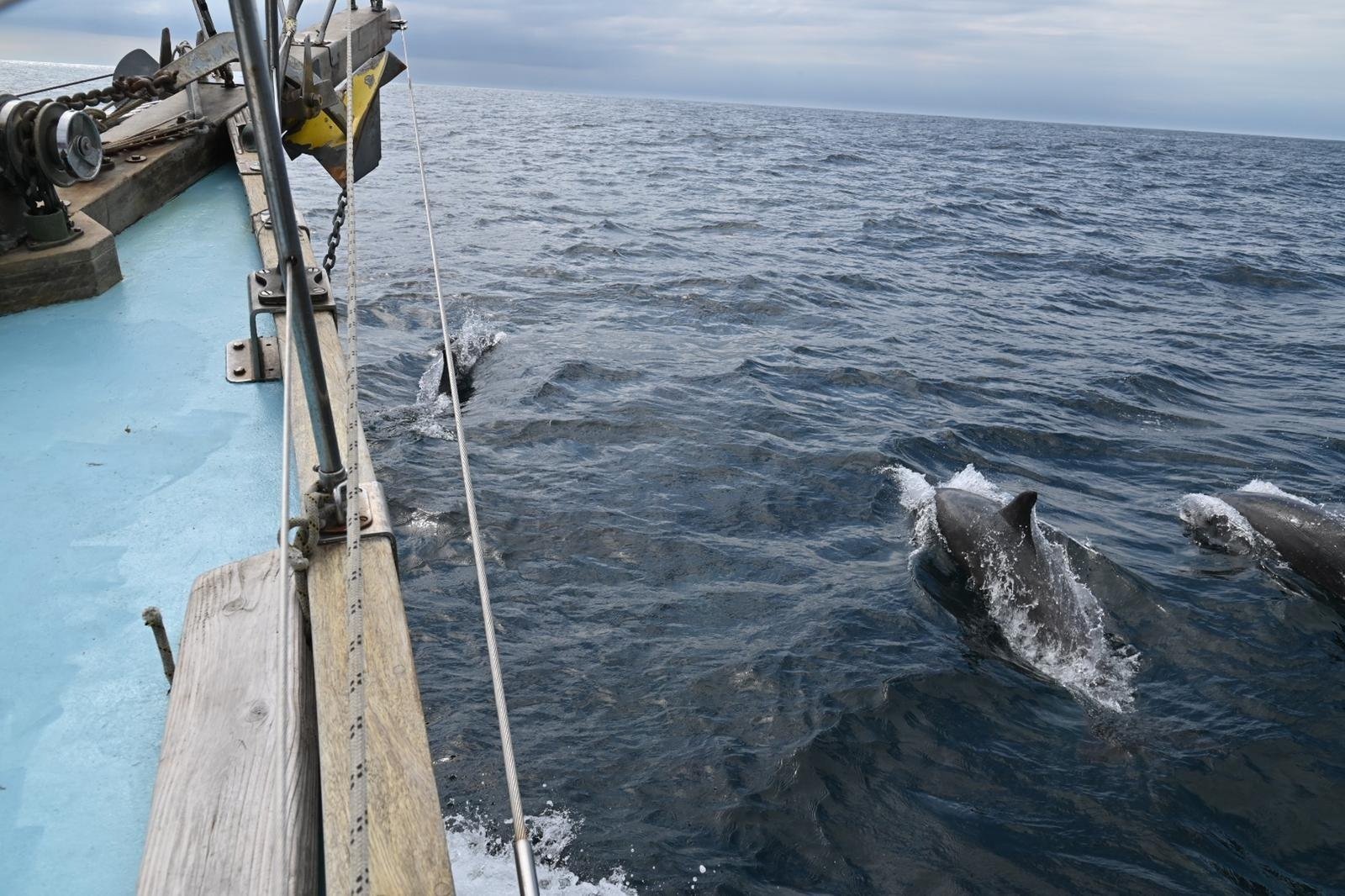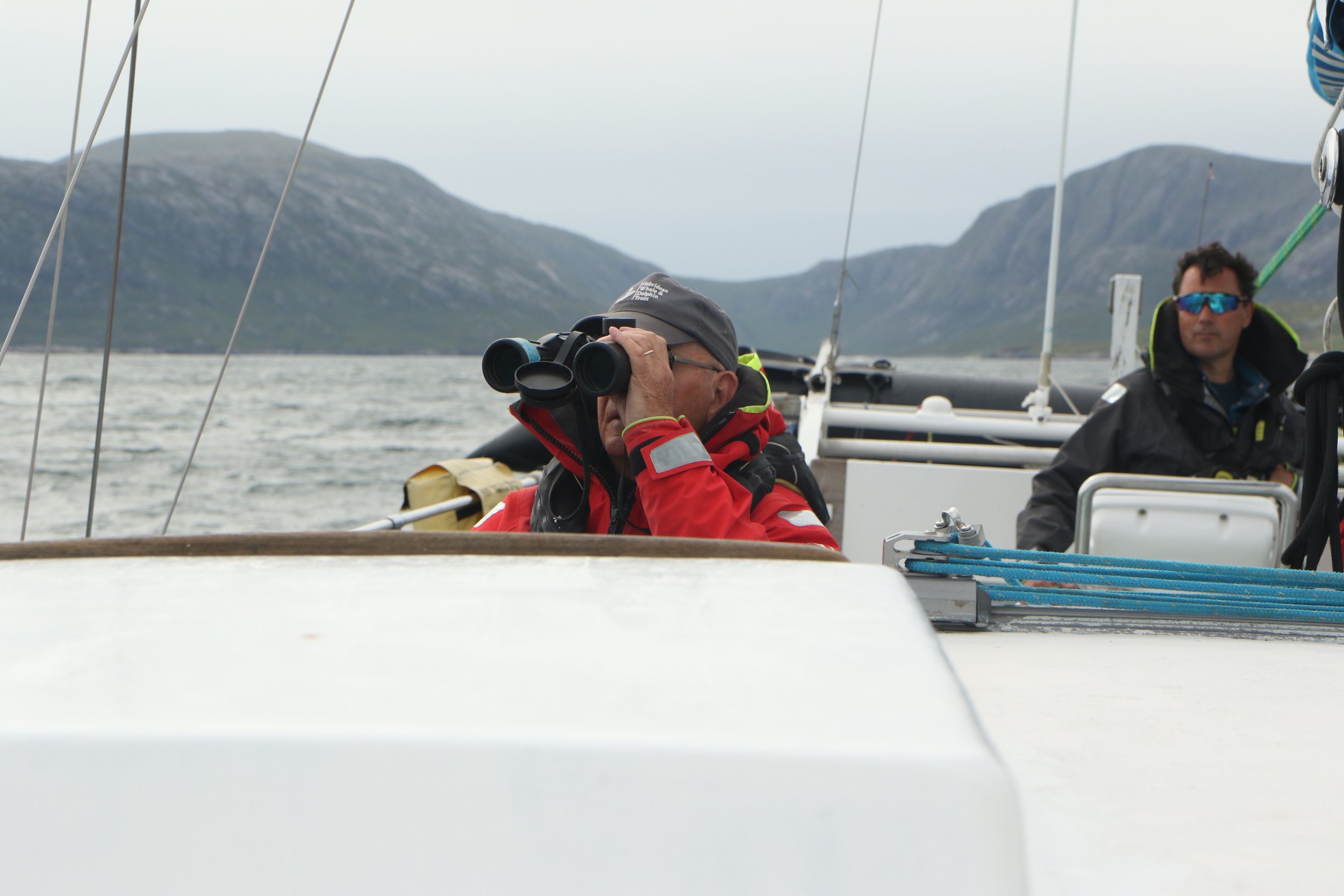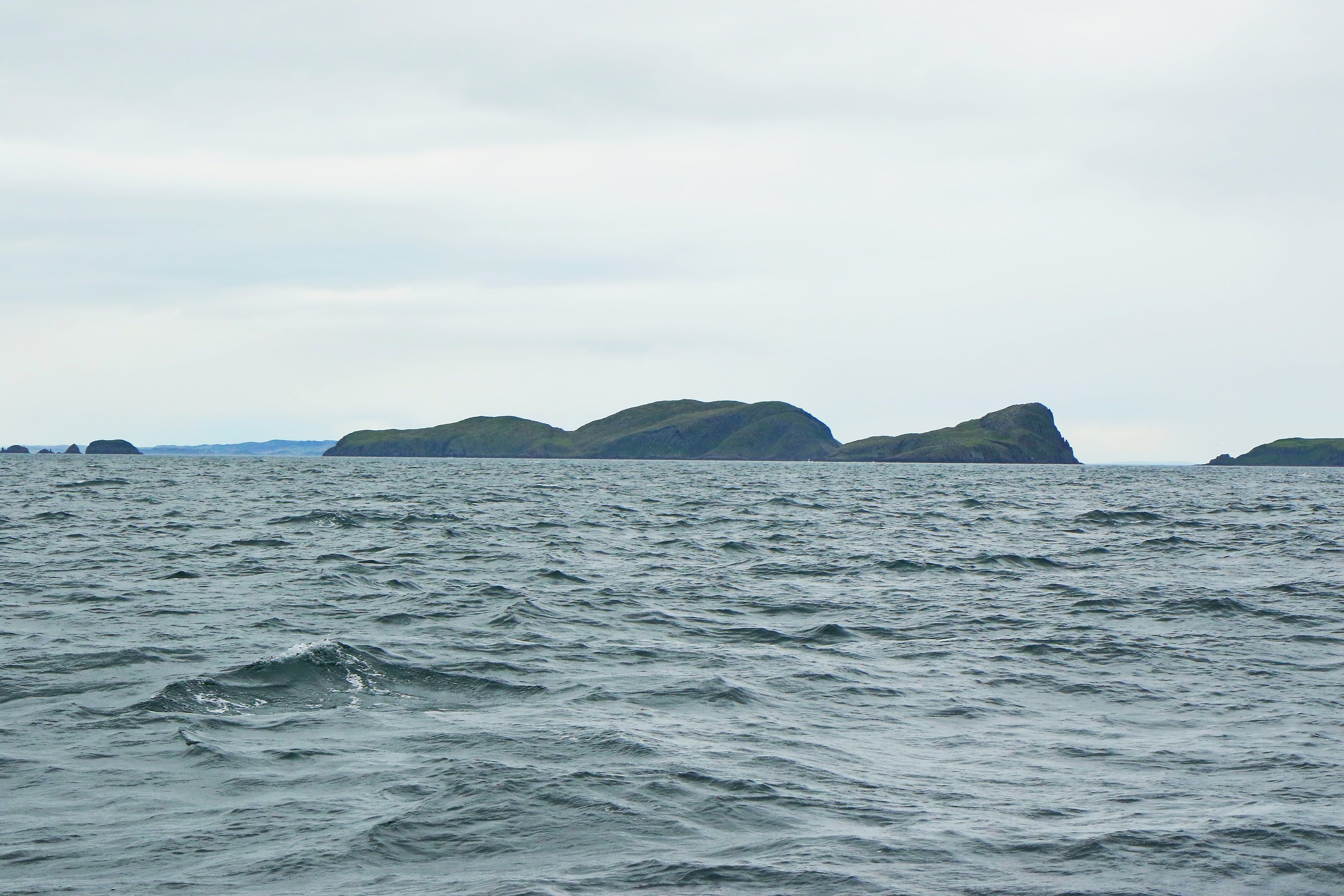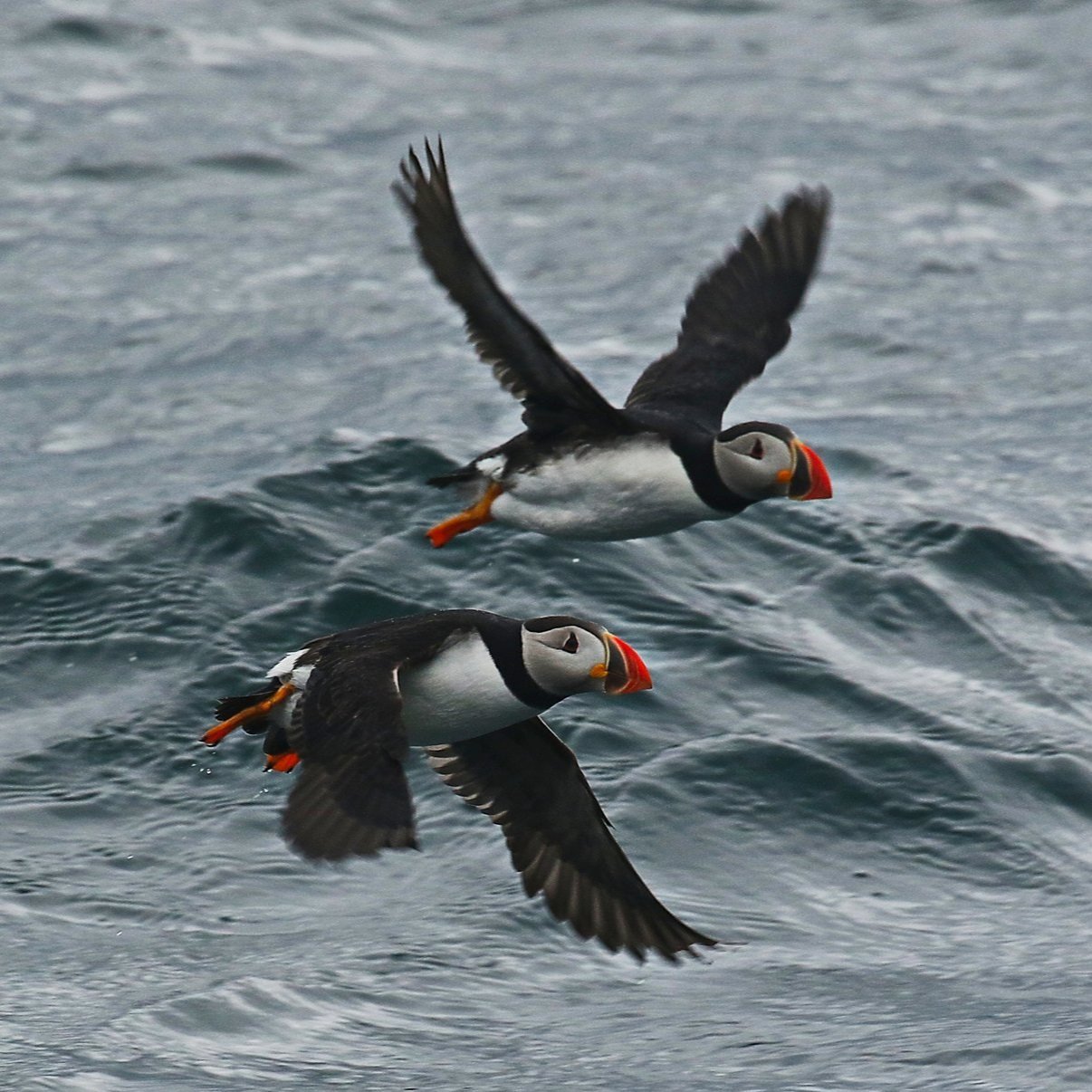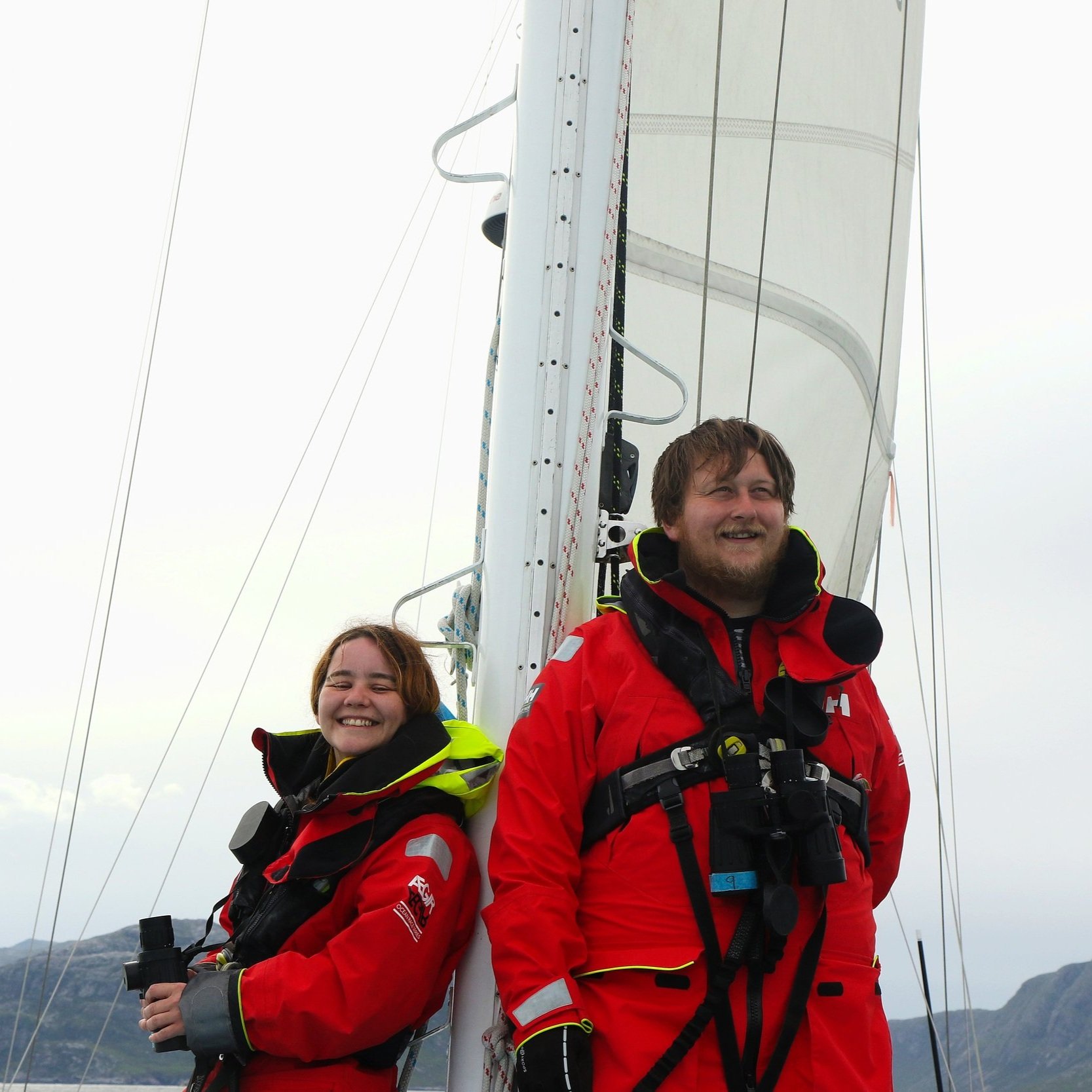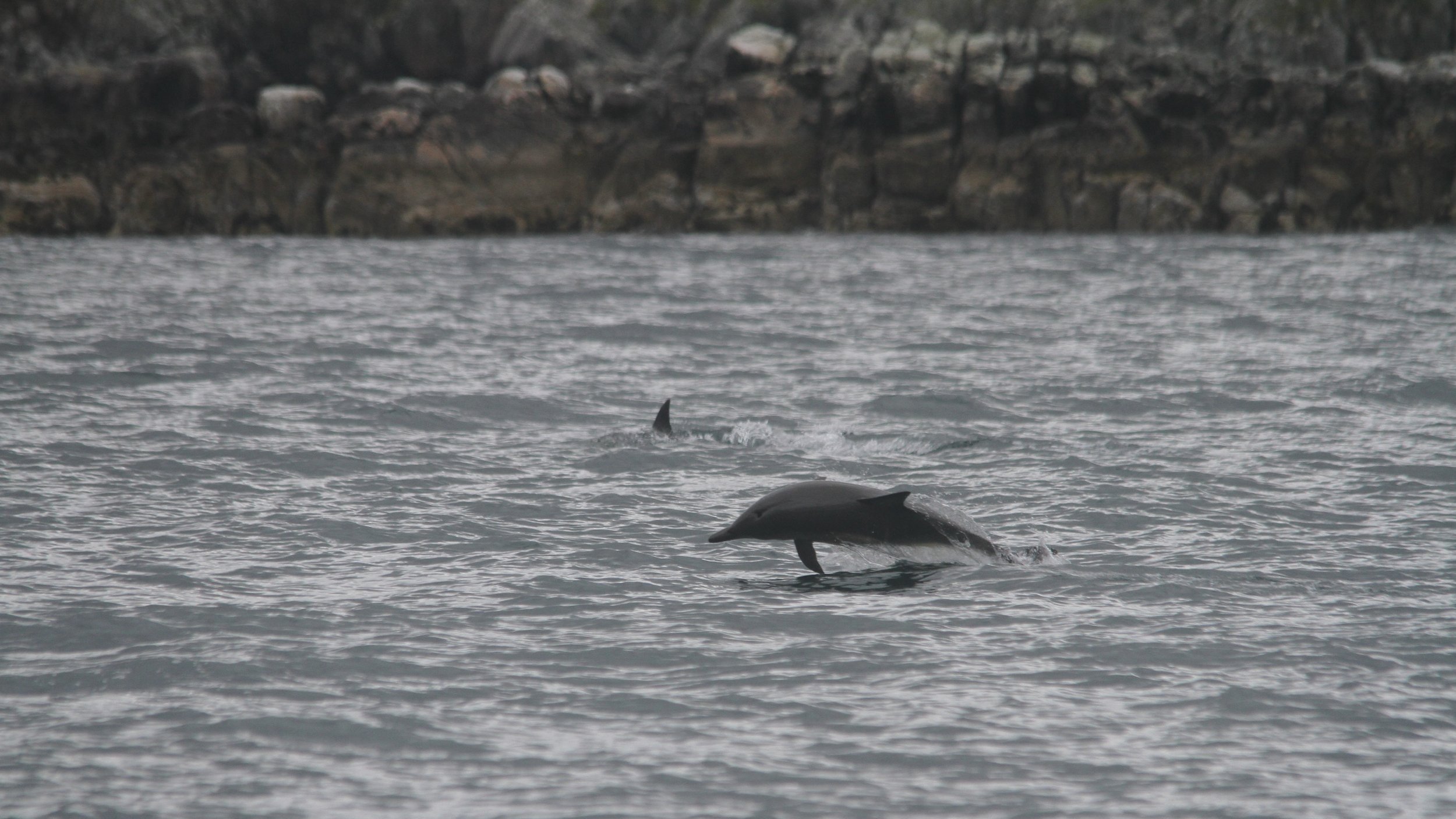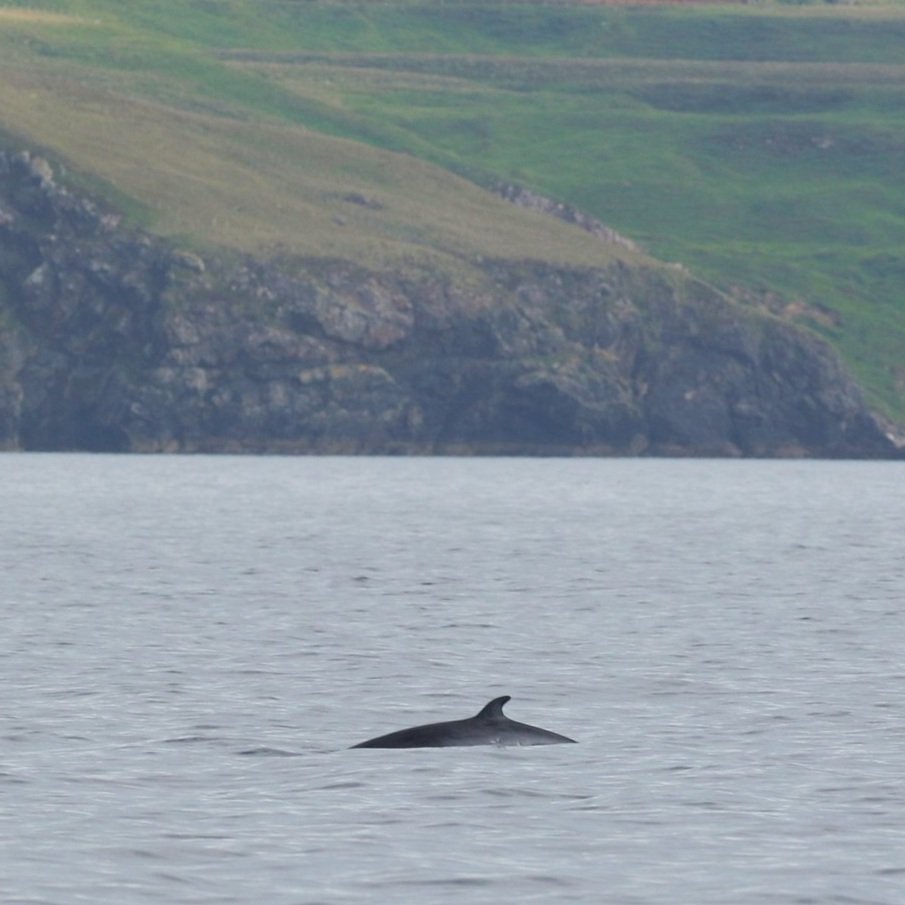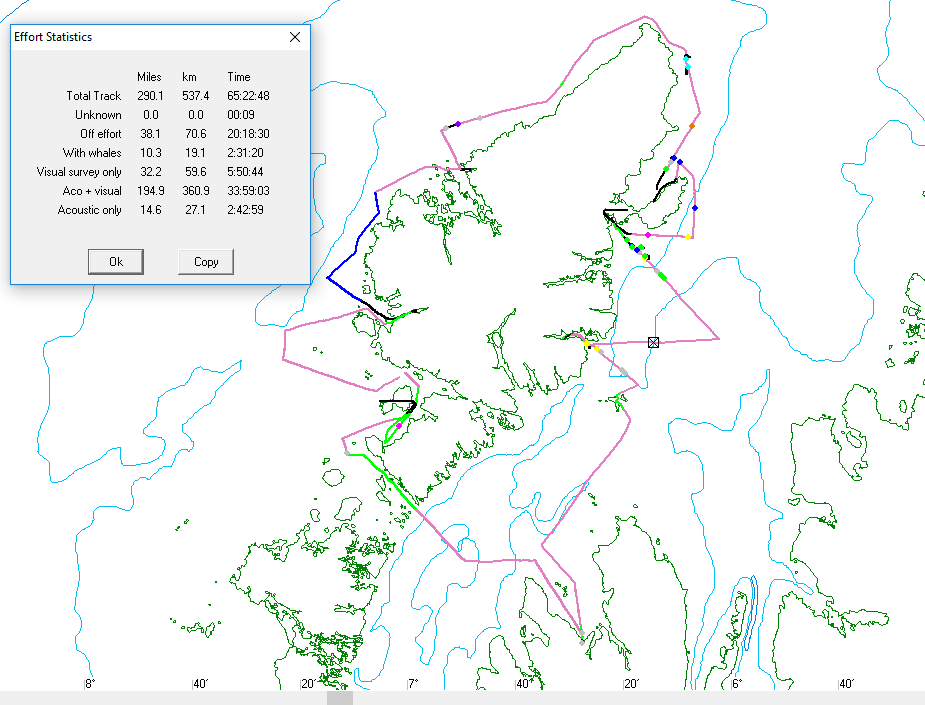Silurian circumnavigates Lewis during seventh expedition
SILURIAN - OUR RESEARCH VESSEL - AND HER TEAM OF DEDICATED VOLUNTEERS CIRCUMNAVIGATED THE ISLE OF LEWIS DURING THE SEVENTH EXPEDITION OF THE 2022 SUMMER FIELD SEASON. BATTLING THROUGH SOME CHALLENGING CONDITIONS (SEEMS TO BE STANDARD FOR 2022 SUMMER IN THE HEBRIDES), THE TEAM WAS REWARDED WITH SOME GREAT ENCOUNTERS ON THE WAY BACK TO STORNOWAY. HERE CRAIG MACKIE, SCIENCE OFFICER ON BOARD, RECALLS THE EXPEDITION…
The day before the trip left from Stornoway harbour the waters were deadly still, reports were coming in of countless sightings from nearby headland and Hebridean Whale Trail spot, Tiumpan Head. We welcomed our volunteers on board, excited to plan the weeks adventure.
Day 1
Unfortunately, the weather changed its mind the next day and we were met with strong headwinds, creating lumpy seas almost the moment we were out of the shelter of the harbour - a rough introduction to ocean sailing for our helpers. Even with conditions far from perfect, it wasn’t long before we had our first sightings - a pod of common dolphins leaping past the boat, followed by the blow of a small whale which was never fully spotted but presumed to be minke. We sailed north and rounded the tip of Tiumpan to get into some shelter from the growing winds and were welcomed by harbour porpoise surfacing around the boat. Finally anchoring in the bay near Garrabost, we settled down and the volunteers got some well-earned rest after a hard day of making sure our buckets were up to scratch.
Day 2
Day 2 was make or break, we had two options: either head east and survey the upper Minch and the sea lochs around the coast of the mainland or head north, around the butt of Lewis and into the Atlantic to the northwest, an area that we often struggle to get to. We started the day early and decided to head north. Within an hour of raising the anchor we were treated to a minke whale, the sheltered bay sheltered making it very easy to spot sea creatures. A few harbour porpoise and some seals later and we were well on our way north when some taller fins emerged out of the water. A pod of white beaked dolphins surfaced close to the boat and began leaping around nearby. They joined us and began bow-riding at the front of the boat, following us on our journey north, much to the excitement of the volunteers and crew. Before long they headed off and we continued our journey to the northernmost point of Lewis and around the Butt into the Atlantic ocean. We turned southwest down the coast towards our anchorage and before long there were reports of strange noises coming through the hydrophone…bottlenose dolphins. The buzzes and clicks were coming in loudly and persistently and before long one was seen crashing through the waves a few hundred metres off. The dolphins began to meander into our path and joined us for a few minutes before moving off to continue foraging. We finally got into our anchorage in Loch Carloway for the night where a golden eagle was watching over us and doing occasional flyovers before returning back to its perch. At the end of the day, I could report that the volunteers verified that the buckets were yet again, in full working order.
Day 3
Today was to be rough - high winds would create big swells and we had little to no protection from land for the first stint of the day, we were ensured however that the day after would see better conditions. The volunteers gave it a good whack in the morning, but with conditions worsening and not looking to improve, everyone moved to the back of the boat to enjoy some sailing, whilst the hydrophone carried out its work. Sea eagles and sooty shearwaters flew nearby the boat but no marine mammals were out to play. After a few hours in the lumpy Atlantic swell, we turned south eastwards towards Scarp Island, where we would try to find a suitable place to spend the night. Entering Loch Reasort, the world changed; from howling, deafening winds to calm mirror like waters. The sun began to shine on the hills around the narrow loch and the only thing interrupting the peacefulness was the occasional cry of “CREEL, 140 metres, right”. We settled down the anchor and some of the volunteers and crew went on land to enjoy one of these spots you find inaccessible to those on land and foot. A quick run around the hills and streams before another fine Silurian dinner and finally bed. Buckets were described to be in a “satisfactory” working condition today.
Day 4
It was “the day after” and, as as often happens with the weather forecast in the Hebrides , the conditions we were promised had changed. Rising winds in a slightly different direction scuppered our plans to head south and a compromise was made. However, we were once again assured that tomorrow would bring better conditions. We headed out around Gasker Lighthouse and then turned back in towards Harris to the north of Taransay, before anchoring up between the beautiful white sands of Taransay and Luskentyre beaches. We set down for the night after another day safe in the knowledge that tomorrow would finally be the calm weather we were promised. Bucket conditions were not tested today.
Day 5
The good weather we were promised, did not arrive. We decided on a new course of action and headed in through the Sound of Harris and back into the Minch. Great elation camefrom the group when, in the late morning, “Sighting” was called out and we had our first confirmed marine mammal in 3 days - a grey seal. Slightly elated we headed through the sound of Harris and into the Minch towards the north end of Skye. With conditions slightly better and hopes up, we headed across the open water and whilst there were signs of cetaceans in the form of whistling on the hydrophone and the smell of whales breath in the air, no animals were spotted. We continued on and into a bay at the southeast of Loch Snizort where we would shelter for the night and enjoy some wonderful Mexican food.
Day 6
The second to last day would be a long journey north. We were escorted out of the loch by Arctic skua harassing the smaller kittiwakes and attempting to steal their hard earned meals. We sailed up towards the Shiant islands in calm conditions but still not a lot was on show. Passing between the magnificent cliffs of the Shiants where thousands of puffins, guillemots and razorbills.
We passed through and headed northeast towards Eileen Liubhaird and just as we entered the entrance to Loch Sealg, the waters around us finally came to life. Multiple pods of common dolphins emerged on all sides of the boats, foraging along the coastline - numbering in around 60 in total - they merrily hunted along the rocky shore, paying little attention to us whilst we sailed in towards our anchorage.
Day 7
The final morning of the trip started with good omens. During breakfast we were joined by harbour porpoise feeding by Silurian still at anchor. We headed out east to begin with, towards the east Shiant bank in the hopes of some larger whales but unfortunately that wasn’t to be. Heading back in towards Stornaway we were almost into the bay expecting yet another disappointing day of few sightings when the winds changed and we finally got the good viewing conditions we had been promised. As the winds dropped, the seas calmed until there was barely a ripple on the surface and almost instantly, porpoise began to emerge around the boat. Before long some more fins were spotted a bit further off where a pod of around 15 common dolphins turned and started making their way towards us. Our entourage of dolphins followed us into harbour for a short while before moving on. Just as the excitement was looking to calm down there was an eruption of water nearby caused by a lunge feeding minke.
The whale continued feeding for a short while before we decided to move on. Plenty more porpoise were followed by another minke, this one much smaller at only around 6 metre. All these sightings stretched the last bit of the journey from a 30 minute voyage into around 3 hours! After an enjoyable last day, we finally made it back into Stornoway for well earned meal in a local eatery having after a bouncy week circumnavigating Lewis and surveying several hundred miles over the week.
Track lines showing areas surveyed

